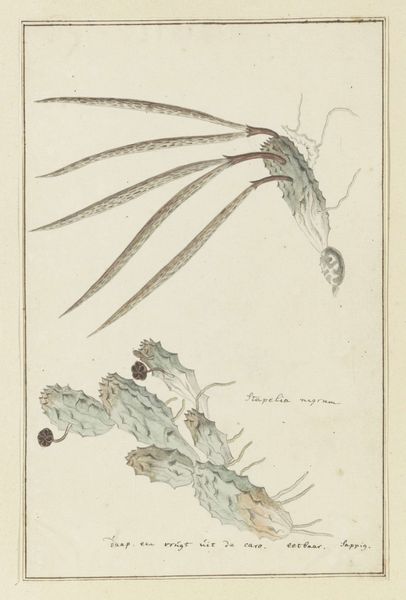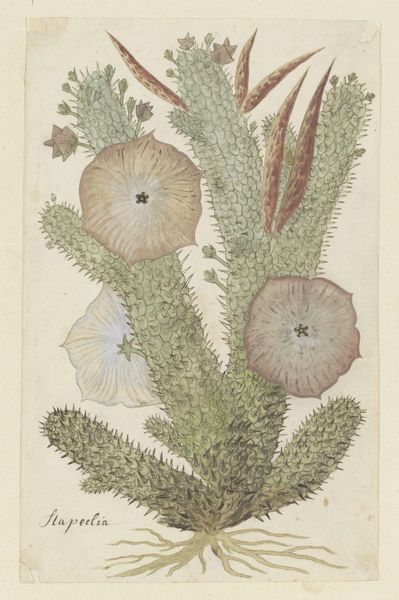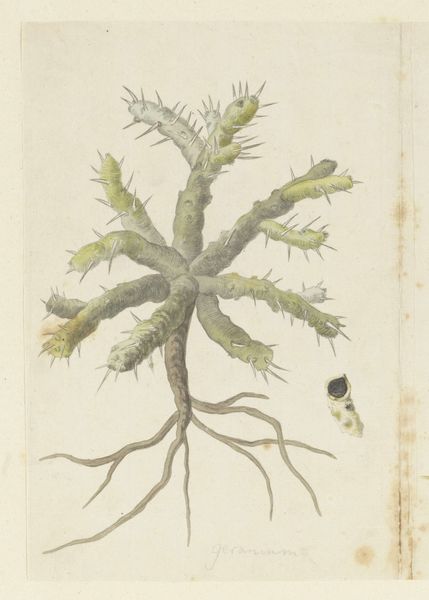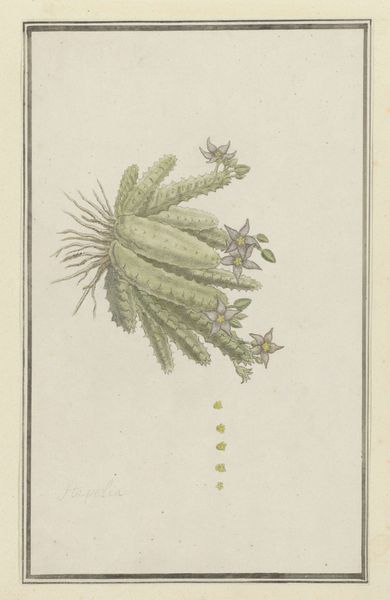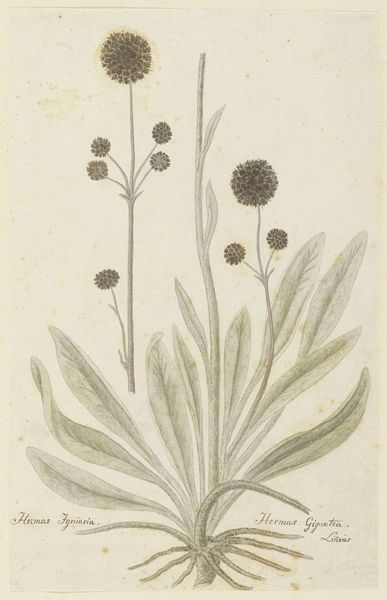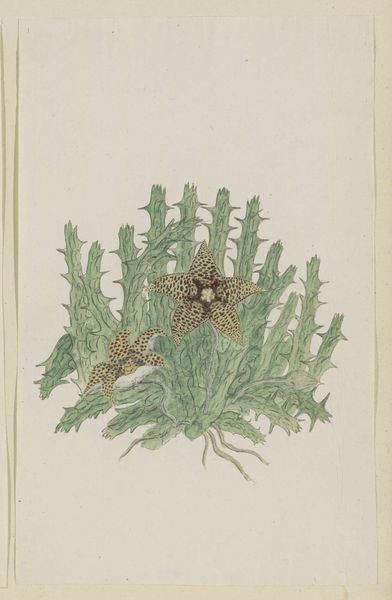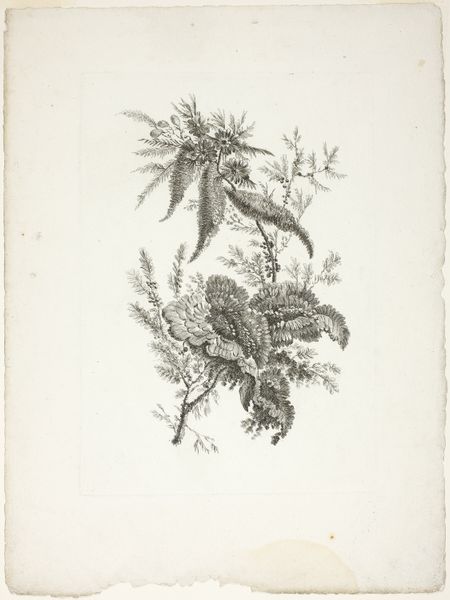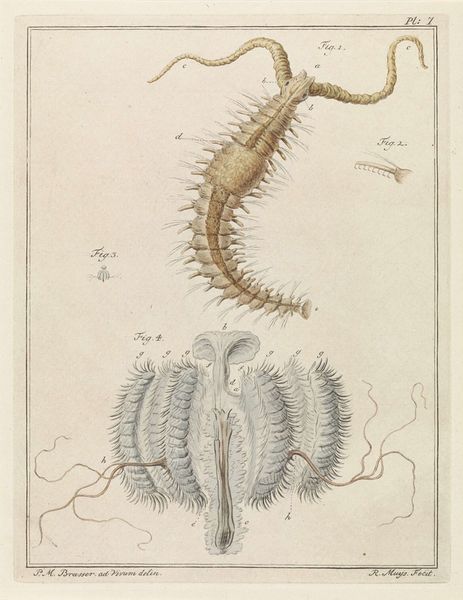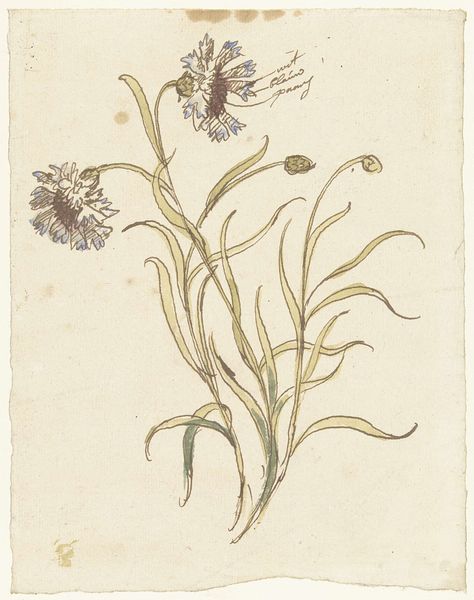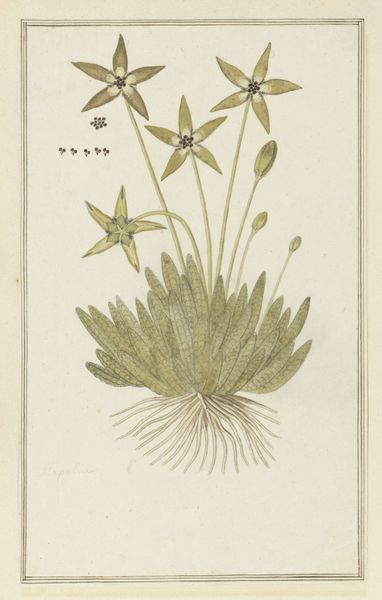
drawing, watercolor
#
drawing
#
watercolor
#
coloured pencil
#
watercolour illustration
#
botanical art
#
realism
Dimensions: height 660 mm, width 480 mm, height 401 mm, width 251 mm, height mm, width mm
Copyright: Rijks Museum: Open Domain
Curator: What a curious botanical rendering. Robert Jacob Gordon possibly created this watercolor drawing, “Pectinaria articulata (Ait.) (Stapelia nigrum)”, sometime between 1777 and 1786. The details captured here are just amazing, what do you think? Editor: It feels surprisingly alien! There’s an almost uncomfortable tension between its delicate rendering and the prickly, vaguely menacing forms of the plants themselves. It almost feels like looking at deep-sea creatures instead of something terrestrial. Curator: I agree. Gordon, as a military man and explorer in the Cape Colony, produced many natural history illustrations. There's a distinct desire to record and classify what he observed. The visual vocabulary of botanical art connects the drawing to notions of scientific exploration and colonial understanding. The careful outlines and washed colors give form to this desire for knowledge and control. Editor: Absolutely. I find myself dwelling on the spines. They introduce a sense of caution. Touching, understanding, controlling nature is perhaps not that straightforward. The strange tendrils reaching downward, almost like roots in reverse, seem to defy easy classification. The dark circular structures on top almost recall skulls and death in still life images, making the illustration a complex representation of natural wonder but also death. Curator: Yes, this plant is a complex symbol. Its fleshy form evokes the ephemeral nature of existence while its scientific illustration alludes to aspirations of timeless knowledge. What seems like simple documentation carries emotional depth. Editor: The placement on the page also impacts me, and there are only two specimens that aren't centrally composed on the paper. It's as though they occupy different realms within this one document. Is Gordon also implying how each is distinct through form? Curator: Definitely, the relationship is there, and you’re highlighting Gordon's careful use of pictorial space to subtly communicate difference, and a connection between each. What started as simple documentation transcends. Editor: Seeing this through Gordon's eyes lets us trace a long and involved history where scientific endeavor intertwines with how people view nature, and more. Curator: A convergence of observation and cultural narratives. It shows how imagery bridges understanding between diverse areas and ways of knowing.
Comments
No comments
Be the first to comment and join the conversation on the ultimate creative platform.

